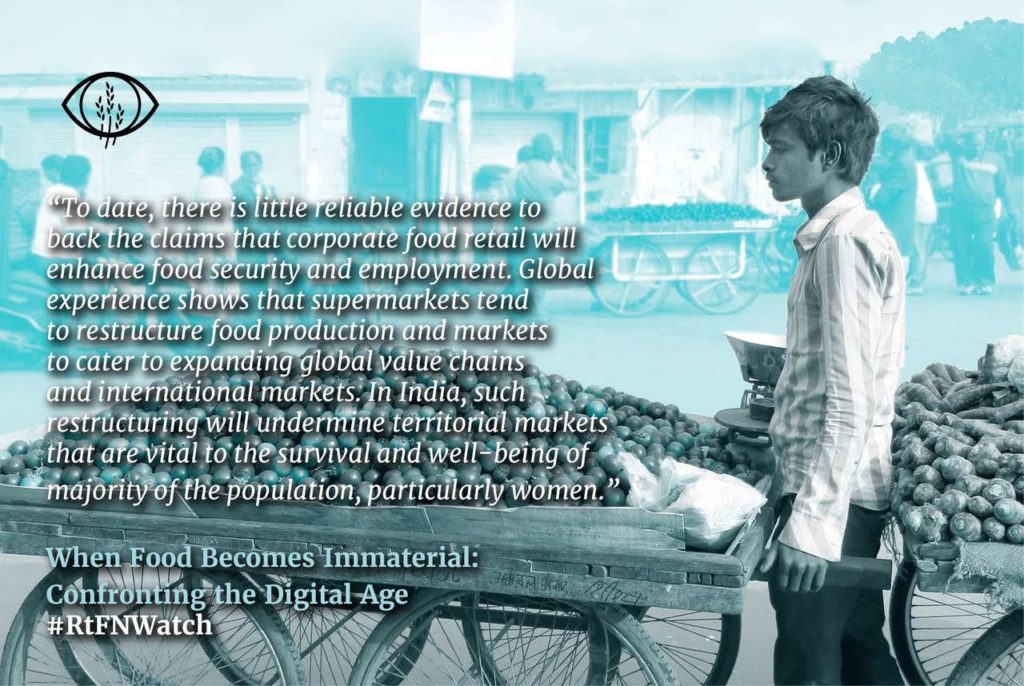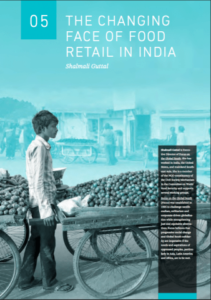18/10/2018
Under: Food Sovereignty and Agroecology, Publications
Excerpt from Shalmali’s chapter:
With growing urbanization, changing lifestyles and digital commerce, India is a coveted market for corporate food retailers. However, most urban consumers purchase food from local, family run stores, fresh markets and vendors with pushcarts. Poorer families depend on subsidized staples from the Public Distribution System. In rural areas, daily food needs are met through own production, foraging and small-scale trading. The importance of such retail can be understood through the concept of “territorial markets”, through which the majority of the food consumed in the world is channeled.
Despite being one of the world’s largest food producers, India is home to the largest undernourished population in the world. Hunger is most prevalent in areas where people depend on subsistence agriculture and foraging, among urban poor, and in conflict zones. Girls and women bear the brunt of hunger and hardship because of deeply entrenched social-cultural discrimination and policies that tend to be gender biased. In poor families, women often eat last and least.

The link to the overview of the entire publication can be accessed here, and the full PDF version is available here, with a supplement downloadable here. Please note that these links opens to an external site.


![[IN PHOTOS] In Defense of Human Rights and Dignity Movement (iDEFEND) Mobilization on the fourth State of the Nation Address (SONA) of Ferdinand Marcos, Jr.](https://focusweb.org/wp-content/uploads/2025/07/1-150x150.jpg)



